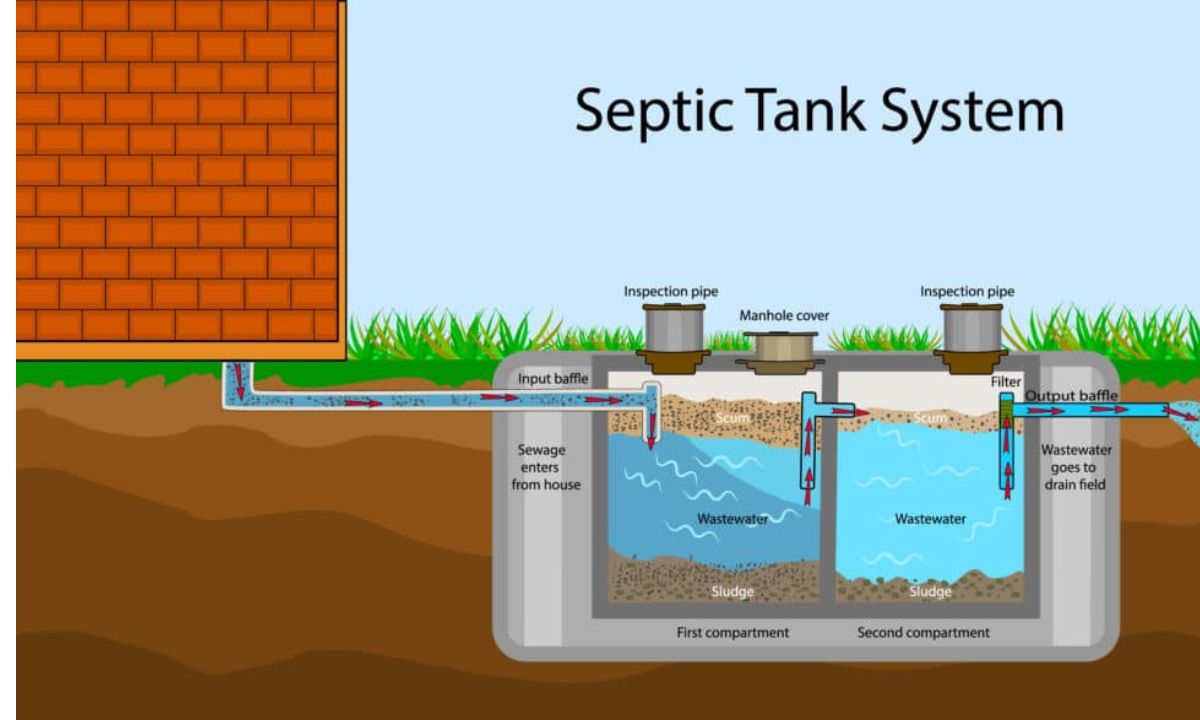General
Unveiling the Power of GPT66X: A Comprehensive Guide
Published
10 months agoon

Introduction:
GPT66X has emerged as a prominent player in the ever-evolving artificial intelligence landscape, revolutionizing our relationship with technology. This article dives into the complexities of GPT66X, giving a far reaching manual for both tech devotees and novices the same.
What is the GPT66X?
GPT66X, short for Generative Pre-prepared Transformer 66X, is a high level cycle of language models created by OpenAI. It boasts enhanced capabilities and enhanced performance and is a member of the GPT-3.5 family. This strong model is intended to comprehend and produce human-like text, making it a foundation in normal language handling.

Key Elements of GPT66X:
Improved Language Appreciation:
GPT66X exhibits unrivaled language understanding, empowering it to get a handle on setting and subtleties in a way likened to human knowledge.
This upgraded cognizance permits the model to produce all the more logically applicable and sound reactions.
Extended Jargon:
GPT66X is able to articulate ideas and concepts with a richness that sets it apart from its predecessors thanks to its extensive vocabulary database.
The extended jargon guarantees that the model can deal with a different scope of subjects and answer really to client questions.

Further developed Adjusting Capacities:
GPT66X offers progressed tweaking choices, permitting engineers to tailor the model for explicit applications and ventures.
This flexibility makes it a flexible device for different undertakings, from content creation to client care applications.
Effective Multimodal Learning:
GPT66X is furnished with effective multimodal learning capacities, empowering it to comprehend and create content in light of both text based and visual data sources.
This component upgrades the model’s exhibition in applications that include mixed media components.
Uses of GPT66X:
Content Creation:
The GPT66X does a great job of coming up with original and interesting content for a variety of uses, such as articles, social media posts, and marketing copy.
Content makers can use the model to smooth out the inventive flow and improve efficiency.
Agents that talk to people:
GPT-66X fills in as an establishment for building progressed conversational specialists that can comprehend and answer client inputs in a more human-like way.
Chatbots fueled by GPT-66X give a consistent and regular collaboration experience.

Language Interpretation:
Utilizing its language understanding capacities, GPT-66X demonstrates priceless in language interpretation undertakings, guaranteeing precise and logically proper interpretations.
This component adds to separating language boundaries in different worldwide settings.
How to Put GPT66X into Use:
Programming interface Combination:
GPT-66X integration into applications is made simple by OpenAI’s API. Engineers can get to the Programming interface documentation to comprehend the execution interaction.
Developers of all skill levels can use the GPT-66X model because the API key makes it easy to communicate with it.
Tweaking for Explicit Undertakings:
Designers can investigate calibrating choices to alter GPT-66X for explicit undertakings or businesses.
OpenAI offers direction on calibrating, permitting engineers to streamline the model’s exhibition for applications like clinical finding, authoritative record investigation, and that’s just the beginning.

Future Turns of events and Contemplations:
Continuous Headways:
OpenAI is focused on continuous innovative work, ceaselessly upgrading the capacities of GPT models.
Remain tuned for updates and progressions as OpenAI endeavors to push the limits of what GPT-66X can accomplish.
Moral Use and Predisposition Alleviation:
Similarly as with any high level simulated intelligence model, moral contemplations are pivotal. OpenAI underscores mindful and fair utilization of GPT-66X.
Engineers ought to know about expected inclinations and effectively pursue alleviating them to guarantee fair and comprehensive applications.
Conclusion:
GPT-66X stands at the very front of language models, offering a brief look into the eventual fate of man-made brainpower. Its extraordinary language getting it, extended jargon, and flexible applications make it a significant instrument for engineers and organizations. As you leave on the excursion of coordinating GPT-66X into your activities, embrace the potential outcomes it brings and remain informed about the most recent improvements in the steadily developing field of man-made intelligence.
FAQs:
What is GPT-66X and how could it be unique in relation to past GPT models?
GPT-66X, or Generative Pre-prepared Transformer 66X, is a high level language model created by OpenAI. It addresses the most recent emphasis in the GPT-3.5 family, flaunting upgraded language understanding, an extended jargon, and further developed calibrating capacities. GPT-66X, in contrast to its predecessors, is built for effective multimodal learning, enabling it to comprehend and generate content based on both visual and textual inputs.
Which key characteristics set GPT-66X apart?
GPT-66X stands apart because of its upgraded language perception, extended jargon, further developed calibrating capacities, and effective multimodal learning. It can comprehend setting and subtleties in a way like human knowledge, making it profoundly flexible for a great many applications. The model’s effectiveness in content creation, conversational agents, and language translation is aided by its extensive vocabulary and adaptability.
How could engineers execute GPT-66X in their applications?
Designers can execute GPT-66X by utilizing OpenAI’s easy to understand Programming interface. The Programming interface documentation gives direction on coordination, and designers can acquire a Programming interface key for consistent correspondence with the model. Moreover, GPT-66X offers tweaking choices, permitting designers to alter the model for explicit undertakings or enterprises.
What kinds of tasks can the GPT-66X be used for?
GPT-66X tracks down applications in different fields, including content creation (for producing imaginative and drawing in happy), conversational specialists (for normal associations with clients), and language interpretation (for exact and relevantly proper interpretations). Its flexibility and effectiveness in multimodal learning make it appropriate for undertakings including both text based and visual components.
What are the GPT-66X’s upcoming developments and considerations?
OpenAI is focused on continuous innovative work, persistently working on the capacities of GPT models. Clients can expect updates and progressions as OpenAI pushes the limits of what GPT-66X can accomplish. Moreover, moral contemplations, capable use, and endeavors to relieve predispositions are essential perspectives that designers ought to be aware of while working with GPT-66X.
You may like
General
The Essential Guide to Modern Septic System Installations: Beyond the Basics
Published
2 weeks agoon
November 4, 2024
Key Takeaways:
- Understanding the components and workings of modern septic systems can lead to better maintenance and increased longevity.
- New technologies are transforming the septic system industry, offering more efficient and environmentally friendly solutions.
- Routine care and assessment of septic systems are essential to avoid expensive fixes and replacements.
- Educating oneself on potential red flags can save homeowners time and money.
Introduction to Modern Septic Systems
Septic systems have quietly been the unappreciated champions of living off the grid for many years, fulfilling their responsibilities in rural and suburban areas without access to city sewage systems. These systems provide a valuable waste management solution that is convenient and efficient. These systems offer a convenient and efficient waste management solution, making them invaluable. With modernization, septic tank installation Orlando, FL, has witnessed significant advancements. Homeowners now have access to systems that not only work efficiently but do so with minimal environmental impact. Understanding these modern systems is crucial for anyone looking to maintain or install a new septic setup.
New technologies, coupled with more sustainable materials, have led to septic systems that are as effective as eco-friendly. These innovations result in increased effectiveness and lower upkeep requirements, giving homeowners a sense of reassurance. As these systems have developed, they have also become an important factor in real estate, often impacting property values depending on their effectiveness and quality of installation.
Components of a Septic System
Every septic system comprises several key components, each critical in wastewater treatment. The main parts are the septic tank, the drain field, and the surrounding soil. The tank acts as the initial stage, allowing heavy solids to settle, forming sludge, while the lighter waste forms scum at the surface. The effluent, or clarified wastewater, exits the tank and goes to the drain field, receiving additional treatment as it seeps through the soil. This process helps remove harmful pathogens and nutrients, protecting human health and the environment.
Understanding how each component functions is essential for diagnosing and resolving issues. For instance, if the drain field becomes soggy or the tank emits foul odors, these could be warning signs of potential failure. Regular inspection of these components can keep the system running smoothly and prevent emergencies that could lead to costly repairs.
How Modern Technologies are Innovating Septic Systems
The septic system industry has benefited significantly from technological innovations in recent years. Renewable energy solutions and smart home integrations have made septic systems more sustainable and user-friendly. According to a U.S. Environmental Protection Agency report, modern systems can now incorporate alternative energy sources, such as solar power, to enhance efficiency. This means that septic systems effectively manage waste and actively contribute to reducing carbon footprints.
Moreover, the advent of intelligent septic systems equipped with sensors offers real-time monitoring, alerting homeowners to potential issues before they become problematic. This proactive management allows for early interventions, prolonging the system’s lifespan and minimizing maintenance costs. Remote diagnostics make it easier for technicians to assess system health, optimize service calls, and ensure quicker repairs if needed.
Benefits of Advanced Septic Systems
The shift towards modern septic systems is driven by numerous benefits that greatly outweigh traditional systems. Firstly, they are designed for higher efficiency, ensuring waste is processed more entirely, resulting in less frequent pump-outs. This translates to reduced operational costs over the system’s lifetime. Additionally, the extended period between maintenance sessions helps lower the overall cost of ownership, making them a wise investment for budget-conscious homeowners.
Furthermore, these systems are designed with environmental protection in mind. Advanced filtration and treatment processes mean that byproducts discharged from the system are much gentler on the environment. This protects local ecosystems and ensures compliance with increasingly stringent regulatory standards. For homeowners committed to sustainability, modern septic systems offer a path toward reducing environmental impact while maintaining high functionality.
Common Challenges and Solutions
Despite their advantages, septic systems are not without their challenges. Problems typically arise from misuse or lack of maintenance. Household items like fats, oils, and non-biodegradable substances can cause blockages that harm system health. Overloading the system with more wastewater than it is designed to handle can also lead to failures.
One of the simplest ways to mitigate these issues is to educate household members about proper usage regularly. Monitoring water usage, avoiding the disposal of harmful substances, and conducting routine maintenance can also prevent problems. When issues do occur, quick action is critical. Identifying a reputable service provider for timely inspection and repair can significantly reduce the severity of most problems.
Tips for Proper Maintenance
The maintenance of a septic system is crucial for its durability and effectiveness. Having a professional examine the system once every three years is typically advised. The frequency of pumping the tank depends on its size and how much the household uses it. It is important to schedule maintenance regularly and adhere to the schedule to prevent unexpected high costs in the future.
A maintenance log is another helpful tool for homeowners to track all services performed on the system. This record assists in planning future maintenance and becomes a valuable asset during property sales, potentially increasing market value by reassuring buyers of the system’s care and upkeep.
Environmental Considerations
The environmental role of septic systems extends beyond merely treating household wastewater. They play a crucial role in safeguarding water quality in surrounding areas by naturally filtering out contaminants. The importance of proper septic system function is highlighted by the Centers for Disease Control and Prevention, which emphasizes the public health implications of well-maintained septic systems.
Eco-friendly design features in modern septic systems ensure they operate harmoniously with the environment, reducing the risk of groundwater contamination. Such designs support public health and reflect well on property owners, showcasing a commitment to sustainable living practices.
Conclusion: Future of Septic Systems
With the ever-increasing demand for sustainable living solutions, the future of septic systems appears promising. Advancements in technology and increased consumer education are paving the way for systems that offer greater eco-efficiency and reliability. Keeping abreast of these developments can provide significant advantages for anyone considering an upgrade or new installation.
Future systems promise to be more user-centric, integrating seamlessly with smart home technology while continuing to minimize their environmental footprint. These developments will play a pivotal role as society moves towards more sustainable living solutions, helping to ensure that septic systems will remain a vital component of rural and suburban infrastructure for years to come.
General
The Role of Regulatory Signs in Public Safety and Efficiency
Published
2 months agoon
September 30, 2024
Introduction to Regulatory Signs
Regulatory signs are vital components of our public infrastructure. They guide behaviors and maintain order in various environments. These signs serve as constant reminders for people to follow rules and regulations, thereby reducing the likelihood of accidents and mishaps.
While many associate regulatory signs primarily with roads, their importance spans beyond traffic management. These signs are crucial in airports, factories, and construction sites. For example, regulatory signs indicate areas where protective equipment is mandatory in factories, significantly enhancing workplace safety. In construction sites, they help maintain order and ensure that safety protocols are diligently followed, thus reducing the risk of workplace accidents.
Critical Types of Regulatory Signs
Regulatory signs come in various forms, each serving a unique purpose:
- Stop Signs
- Yield Signs
- Speed Limit Signs
- No Entry Signs
Each type of sign adheres to specific design and placement rules to ensure they are easily recognizable and understood by the public. Stop signs, for instance, are universally recognized by their octagonal shape and red color, making them easily identifiable even from a distance. On the other hand, yield signs are typically triangular with a red border and white background, signaling drivers to give way to oncoming traffic.
Standardizing these signs across different regions ensures consistency and clarity in communication. Whether on highways or in workplaces, regulatory signs play a critical role in ensuring safety and efficiency. This is especially important for international travelers who may not be familiar with local traffic laws but can still understand the signs due to their universally accepted designs and symbols.
Design Principles for Regulatory Signs
The design of regulatory signs follows strict principles to ensure visibility and clarity. Key elements include color, shape, symbols, and text. These factors are standardized to avoid confusion, particularly in critical situations. For instance, design principles focus on universal recognition to bolster effectiveness. This includes using high-contrast colors and reflective materials to ensure signs are visible even in low-light conditions.
Color, for instance, is used strategically: red for stop signs or prohibitions, yellow for warnings, and blue for informational messages. The shape also plays a crucial role, with octagons used for stop signs and triangles for yield signs, enabling immediate recognition even at a distance. Symbols are another important aspect, often used with text, to convey messages quickly and effectively, reducing the time required for interpretation.
Impact on Road Safety
Regulatory signs play a pivotal role in maintaining road safety. According to a U.S. Department of Transportation study, adequately placed and well-maintained regulatory signs significantly reduce traffic accidents. By enforcing compliance with traffic laws, these signs create a safer environment for both drivers and pedestrians.
One key example is speed limit signs, which help manage traffic flow and reduce the likelihood of accidents. Studies have shown that areas with clearly marked speed limits experience fewer accidents than areas without such signage. Similarly, stop and yield signs prevent collisions at intersections, one of the most common sites for road accidents. By providing clear instructions, these signs ensure that drivers know when to stop and when to proceed, thereby minimizing the risk of crashes.
Role in Enforcing Traffic Laws
These signs are instrumental in enforcing traffic laws. They provide clear instructions and restrictions, which law enforcement officers need to issue citations for non-compliance. This consistency helps establish order on the roads and reduces incidents of reckless driving.
For instance, no entry signs prevent wrong-way driving, a leading cause of head-on collisions. These signs ensure traffic flows smoothly and safely by clearly marking restricted areas. This not only helps maintain order but also aids in the efficient operation of roadways by reducing the points of potential conflict between vehicles.
Regulatory Signs in Other Sectors
Beyond roads, regulatory signs are essential in various sectors, such as construction, manufacturing, and healthcare. In construction sites, they warn workers of potential hazards and ensure compliance with safety standards. Signs indicating Hard Hat Area or “No Trespassing” are common examples that help maintain safety protocols.
Similarly, regulatory signs guide patients and visitors in healthcare facilities, reducing confusion and enhancing operational efficiency. Clear signage indicating patient wards, emergency exits, and restricted areas helps smooth hospital operations. In factories, regulatory signs indicate areas where protective gear is mandatory or specific activities are prohibited, significantly enhancing workplace safety. These signs ensure that safety protocols are followed consistently, reducing the risk of accidents and injuries.
Modern Technological Advancements
Technology has significantly impacted the realm of regulatory signs. Innovations such as digital and bright signs provide dynamic information and adapt to real-time changing conditions. These advancements enhance visibility and comprehension and improve compliance and safety. For example, intelligent signs can display different messages depending on the time of day or traffic conditions, offering more flexibility than traditional static signs.
Digital signs, for example, can display real-time traffic updates, weather conditions, and emergency alerts, providing drivers with up-to-date information to help them make better decisions on the road. This adaptability ensures drivers receive the most relevant and timely information, enhancing road safety. Advances in materials and lighting technology also mean that regulatory signs are now more durable and visible, further adding to their effectiveness.
Conclusion and Future Perspectives
In conclusion, regulatory signs are indispensable for public safety and operational efficiency. They are crucial in ensuring compliance with laws and regulations, reducing the risk of accidents, and maintaining order. As technology advances, the effectiveness and adaptability of these signs will only improve, offering even more significant benefits in the future.
Proper design, placement, and maintenance remain critical to harnessing their full potential. With ongoing innovations in materials and technology, regulatory signs will continue to be an essential component of public safety infrastructure for years.
General
Why Hand Car Washing is the Best Choice for Your Vehicle
Published
4 months agoon
July 31, 2024
Key Takeaways:
- Hand car washing is gentle on your vehicle’s paint and finish.
- It allows for a thorough cleaning with particular attention to detail.
- Eco-friendly and customizable wash solutions can be used.
- It supports local businesses and fosters community connections.
Introduction
The washing method you choose plays a significant role when it comes to maintaining your vehicle’s pristine appearance and longevity. Hand car washing, performed with care and precision, offers several benefits over automated methods. This article dives into why hand car washing is the best choice for your vehicle, especially in specific locales such as Alabama, where options like brushless car wash Alabama are available for those interested.
Attention to Detail
One of the standout advantages of hand car washing is the level of detail it affords. Unlike automated machines that follow a one-size-fits-all approach, hand washing allows for meticulous cleaning of every nook and cranny of your vehicle. This means no area is missed, and stubborn dirt and grime are effectively removed. This personalized attention helps maintain the overall pristine condition of your car and ensures that every part, including the hard-to-reach areas, is thoroughly cleaned. This thoroughness is invaluable for car enthusiasts and diligent owners as it keeps the vehicle in showroom condition.
Moreover, hand washers can address specific concerns about your vehicle, such as bird droppings, sap, or bug splatters that automated systems often overlook. They can also take the time to treat trouble spots with the appropriate cleaners and techniques, ensuring that your car receives the best possible care. This level of customization and attention to detail is simply unattainable through automated systems, making hand car washing the superior choice for detailed car care.
Gentle on Paint and Finish
While convenient, automated car washes often use stiff brushes and harsh chemicals that can cause micro-scratches and dull the vehicle’s finish over time. Hand car washing, on the other hand, uses soft cloths and gentle cleaning agents that preserve the integrity of your car’s paint and finish. Hand washing your vehicle reduces the risk of damage and maintains its showroom shine for longer. Over time, these minor abrasions from automated washes can accumulate, resulting in a dull appearance and costly paint correction treatments.
Additionally, hand carwashing gives the washer control over the pressure applied during cleaning. They can adjust techniques based on the sensitivity of your vehicle’s paint, ensuring that no damage is done. Soft microfiber towels and sponges are typically used in hand washing to provide a gentle yet effective cleaning, removing dirt without scratching or marring the surface. This meticulous care helps maintain your car’s aesthetic and monetary value, providing it the longevity it deserves.
Eco-Friendly Options
Hand washing your car also allows you to use eco-friendly products. Many automated car washes rely on chemicals that can harm the environment. Hand washing reduces the environmental footprint of your car cleaning routine by choosing biodegradable soaps and water-saving techniques. This is a significant advantage for environmentally-conscious people and contributes to a healthier planet.
For example, some hand car wash services implement water reclamation systems that recycle and reuse water, significantly reducing water consumption. Additionally, eco-friendly, biodegradable soaps and cleaning solutions minimize chemical runoff into the environment. This conscious effort towards sustainable practices benefits the planet and can resonate well with environmentally-conscious consumers, adding to the appeal of hand washing services. In the broader sense, such practices contribute to the global effort of conserving natural resources and protecting ecosystems from harmful pollutants.
Supporting Local Businesses
Opting for a hand car wash supports local businesses and fosters community connections. Small car wash services often rely on skilled labor from within the community, contributing to the local economy. This can help sustain local jobs and promote economic growth in places like Alabama. Moreover, these businesses often provide a more personalized and higher-quality service than large, automated chains.
In addition, local hand car washes often build lasting relationships with their customers, providing a sense of community and trust. Regular patrons can benefit from services and recommendations tailored to their vehicle’s needs. Supporting local businesses helps the economy and fosters a sense of regional pride and camaraderie. By choosing a hand car wash, you contribute to the well-being of your community, ensuring that local businesses thrive and continue to offer valuable services.
Customizable Wash Solutions
Hand car washing allows customized care tailored to your vehicle’s needs. Whether your car requires a quick wash or detailed cleaning, hand washing services can be adjusted to suit varying needs and preferences. This level of customization ensures that your vehicle receives the care it deserves, resulting in better maintenance and longer-lasting aesthetics.
For instance, some cars require special attention due to their unique paint finishes, older age, or specific use cases. Hand washers can adjust the cleaning techniques, products, and tools based on the condition and type of vehicle, ensuring it’s treated just right. From using clay bars to remove contaminants to applying high-quality waxes and sealants for protection, the customizable aspect of hand car washing covers various levels of detail. This personalized approach ensures that every vehicle receives the specific care required to maintain its appearance and value, thus extending its lifespan and presentation significantly.
Conclusion
In summary, hand car washing offers unparalleled benefits that protect the integrity and appearance of your vehicle. Hand washing is superior for car care, from attention to detail and gentle handling to eco-friendly options and support for local businesses. By opting for a hand car wash, especially in areas like Alabama, you can ensure your vehicle remains in optimal condition while contributing positively to the local community and environment. Embrace the meticulous and personalized care hand car washing provides for a cleaner, shinier, and well-maintained vehicle.

The Essential Guide to Modern Septic System Installations: Beyond the Basics

Optimizing Bakery Displays for Enhanced Customer Experience

The Role of Regulatory Signs in Public Safety and Efficiency

y2mate: Effective Ways to Download YouTube Videos Using y2mate

Arabic Mehndi Designs: A Cultural and Aesthetic Masterpiece

Introducing Preppy PFP: The Ultimate Guide to Achieving the Perfect Profile Picture
Trending
-

 Fashion2 years ago
Fashion2 years agoArabic Mehndi Designs: A Cultural and Aesthetic Masterpiece
-

 General2 years ago
General2 years agoy2mate: Effective Ways to Download YouTube Videos Using y2mate
-

 Trends1 year ago
Trends1 year agoIntroducing Preppy PFP: The Ultimate Guide to Achieving the Perfect Profile Picture
-

 Fashion12 months ago
Fashion12 months agoBB Belt: The Perfect Accessory for Your Style
-

 Fashion Today2 years ago
Fashion Today2 years agoFaux Locs: History, Types, Benefits & Maintenance
-

 Fashion2 years ago
Fashion2 years agoDiscovering the World of Alizeh Fashion: A Guide to Modern Pakistani Clothing
-

 General2 years ago
General2 years agoDave’s Hot Chicken – The Ultimate Guide to the Hottest Chicken
-

 Fashion2 years ago
Fashion2 years agoThe Benefits of Wearing Eco-Friendly Clothing for Women
